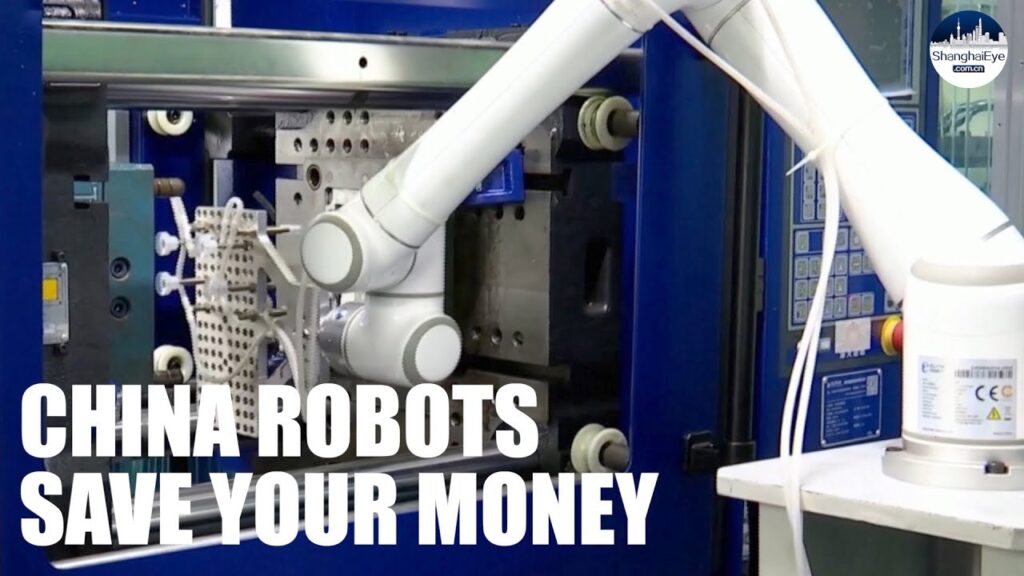Industrial Robot Price: China Sees Industrial Robot Surging for a Low Price Despite Chip Costs Rising. Find Out Why.
Over the past few years, the manufacturing industry in South China’s Guangdong province has experienced a significant shift. Manufacturers in the region, particularly in Zhongshan, have begun embracing automation and employing industrial robots to streamline their operations. This change has been attributed to the decline in prices of industrial robots, which has made them more affordable for businesses in the region. In this article, we will explore the reasons behind this surge in industrial robot adoption and the impact it has had on the manufacturing landscape in Guangdong.
The rise of industrial robots in Guangdong can be understood in the context of two key factors: declining prices and rising chip costs. While it may seem counterintuitive that industrial robot adoption would surge amidst increasing chip costs, there is a logical explanation for this phenomenon.
Firstly, the decline in prices of industrial robots has made them more accessible for manufacturers in Guangdong. Historically, industrial robots were considered a luxury for large-scale enterprises due to their high cost. However, as technological advancements have been made and economies of scale have come into play, the prices of industrial robots have significantly reduced. This has made them a viable option for small and medium-sized businesses as well.
According to a recent study, the average price of industrial robots has dropped by nearly 25% in the past decade. This reduction in price has been attributed to various factors such as increased competition among manufacturers, improved production techniques, and the standardization of components. As a result, manufacturers in Guangdong are now able to invest in industrial robots without burning a hole in their pockets.
Secondly, the rise in chip costs has created an economic incentive for manufacturers to embrace automation. As the demand for technology products continues to grow, chip manufacturers have been faced with a supply crunch. This has caused the prices of chips to rise significantly, putting strain on manufacturers who rely heavily on them.
To mitigate the impact of rising chip costs, manufacturers in Guangdong have turned to industrial robots. Industrial robots, powered by advanced software and artificial intelligence, can perform a wide range of tasks with precision and efficiency. By replacing manual labor with robots, manufacturers can reduce their reliance on chips without compromising productivity or quality.
Furthermore, industrial robots offer benefits beyond cost savings. They can work round the clock without rest, are highly adaptable to different tasks, and can be easily reprogrammed to meet changing demands. This flexibility and reliability have made them an attractive proposition for manufacturers in Guangdong, who are constantly seeking ways to optimize their operations.
The adoption of industrial robots in Guangdong has had a profound impact on the manufacturing landscape in the region. Not only has it improved efficiency and productivity, but it has also created new job opportunities. Contrary to popular belief, the rise of automation has not led to widespread job losses. Instead, it has resulted in a shift in the nature of work, with employees being assigned more complex and high-value tasks that require human skills and creativity.
In conclusion, the decline in prices of industrial robots has played a pivotal role in driving their adoption in Guangdong’s manufacturing industry. Despite the rising costs of chips, businesses in the region have been able to leverage the benefits of automation by investing in industrial robots. This trend not only highlights the importance of robotics in the future of manufacturing but also underscores China’s position as a global leader in industrial automation. As the prices of industrial robots continue to decline and their capabilities improve, we can expect to see further integration of automation in manufacturing processes, revolutionizing the industry as we know it.
Industrial Robot
“China’s Booming Industrial Robot Market: Overcoming Rising Chip Costs for Maximum Affordability”


